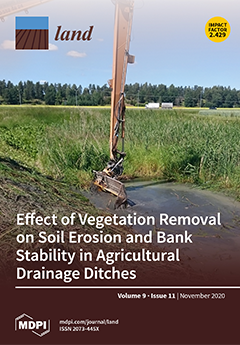The
Huerta is recognised as one of the 13 specific agricultural landscapes in Europe, present in only three Mediterranean countries, namely Spain, Italy, and Greece. In the case of Spain, three areas fall within the established
Huerta agricultural classification: the
Huertas de Valencia
[...] Read more.
The
Huerta is recognised as one of the 13 specific agricultural landscapes in Europe, present in only three Mediterranean countries, namely Spain, Italy, and Greece. In the case of Spain, three areas fall within the established
Huerta agricultural classification: the
Huertas de Valencia,
Murcia, and
Vega Baja. While all of them share common landscape features, each
Huerta has distinguishing singularities which are approached through two perspectives: firstly, the structural tangible elements, related to functional networks—water distribution, pathways networks, settlement patterns, and the agricultural production system; and secondly, the role of the intangible components—connotations of the word
Huerta, water management, canal and path upkeep rules, and the administration of these territories. The analysis of the tangible elements and intangible components in the three Spanish
Huertas shows these territories as complex and balanced systems that have historically counterbalanced the environmental drawbacks in one of the most arid European regions. Despite being a highly appreciated environmental and productive asset, these
Huertas are under intense pressure from urban development in highly urbanized metropolitan areas. This study shows
Huertas’ uniqueness through their historical role in the territorial planning and management strategies at the local level, finally depicting
Huertas as a present strategical opportunity for reaching environmental goals in peri-urban areas.
Full article





